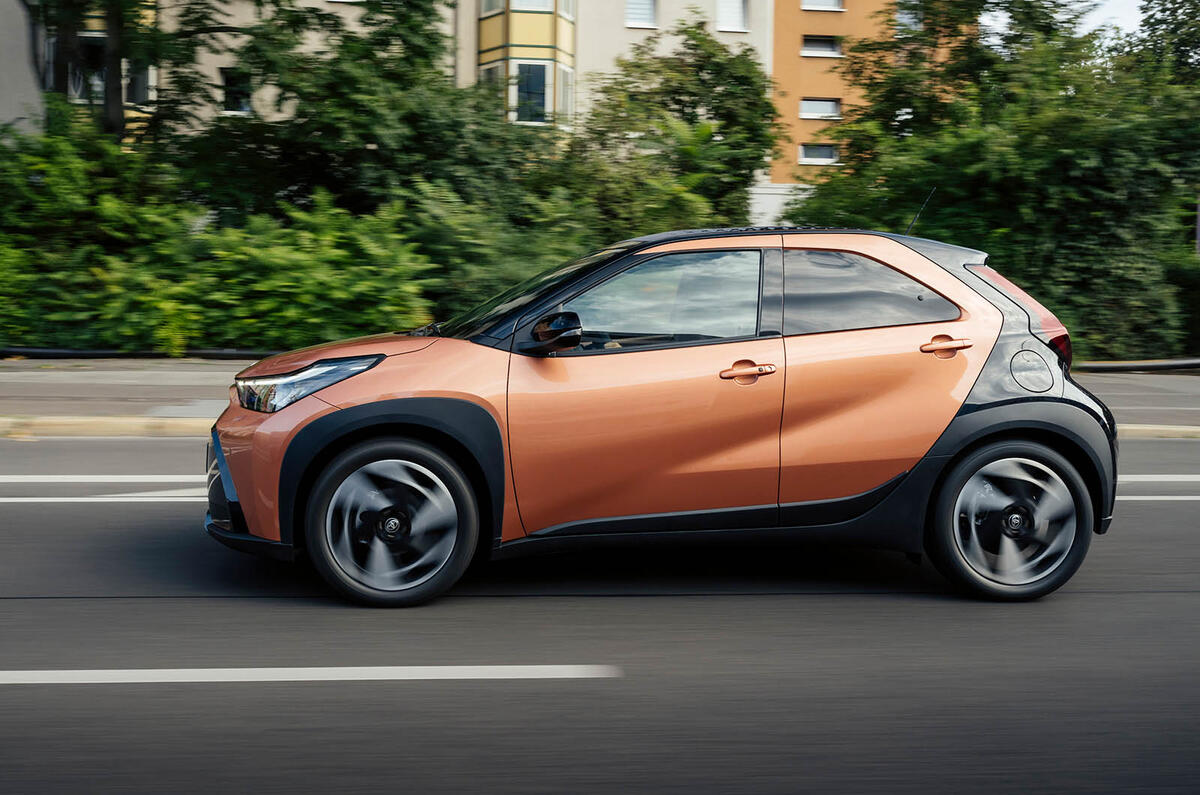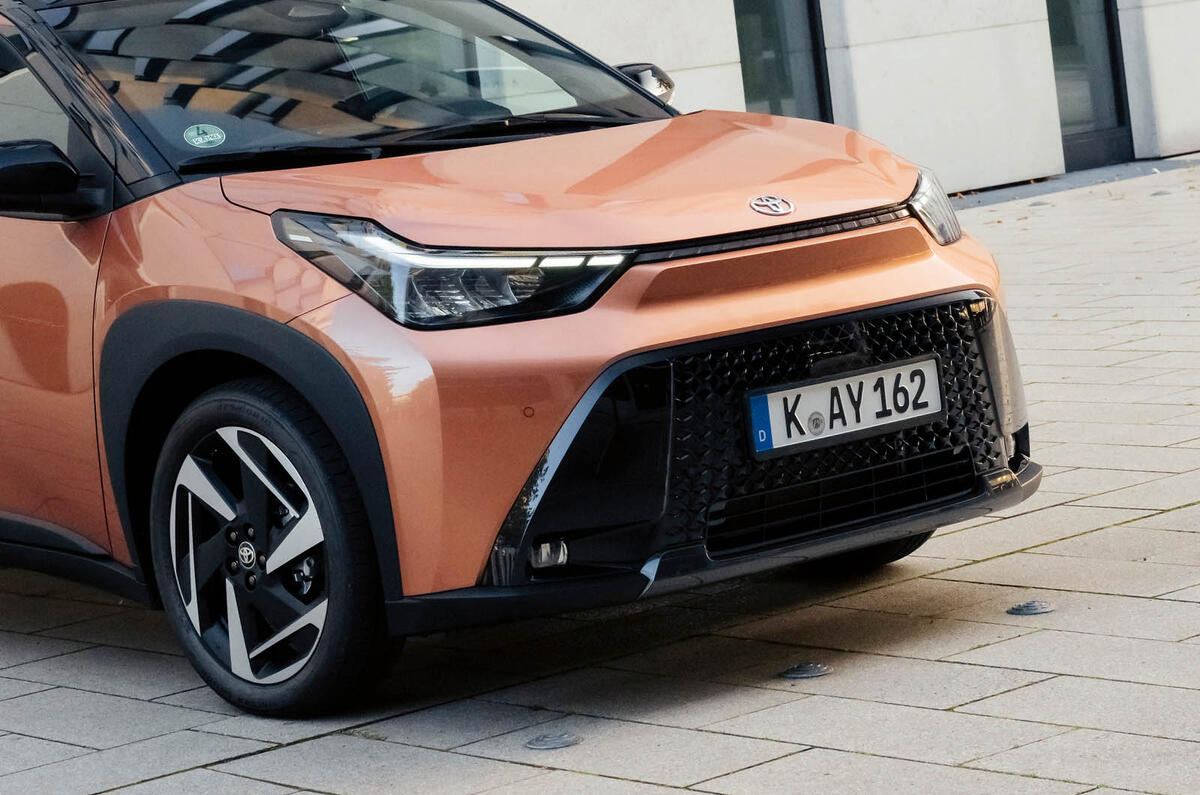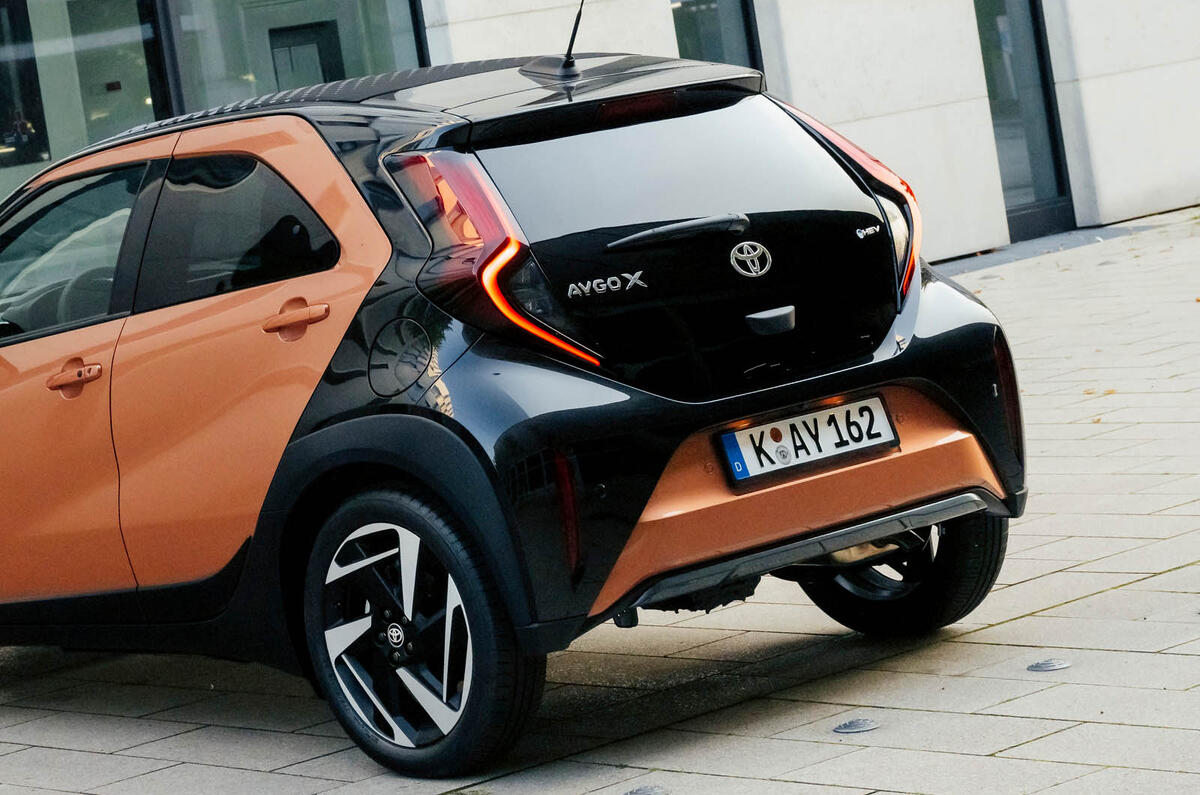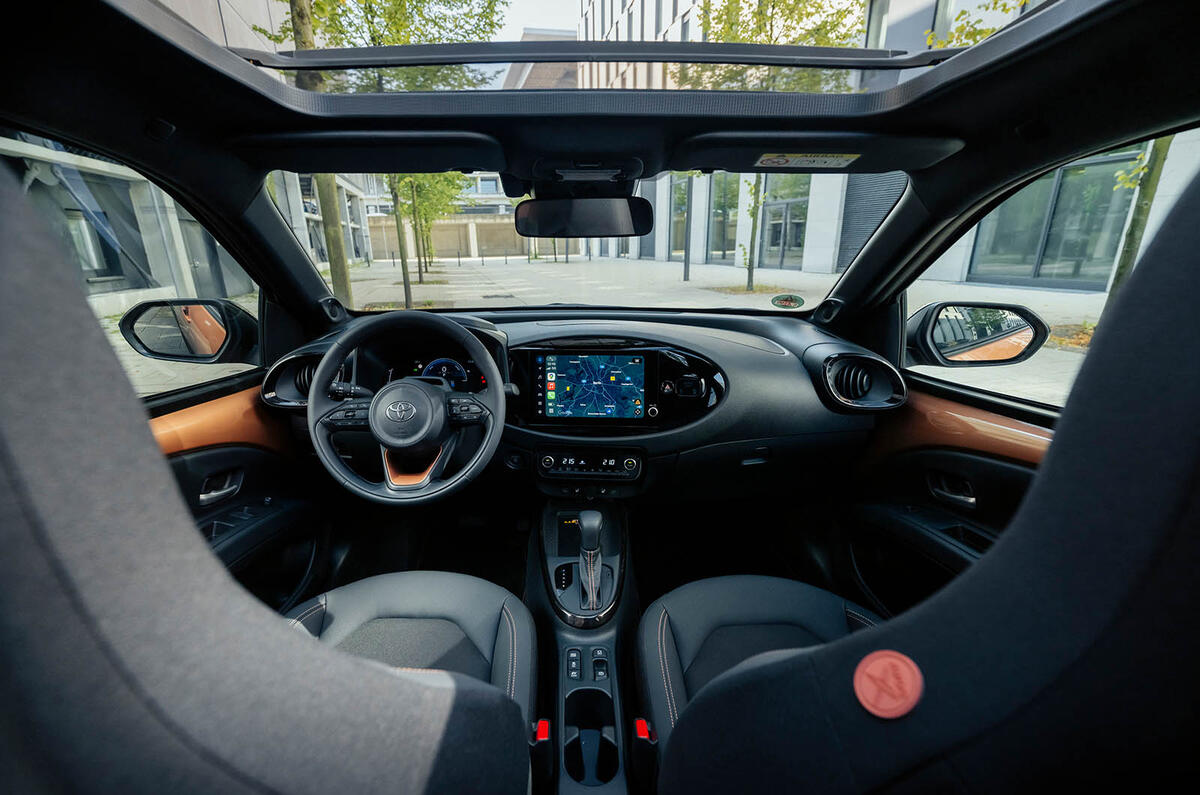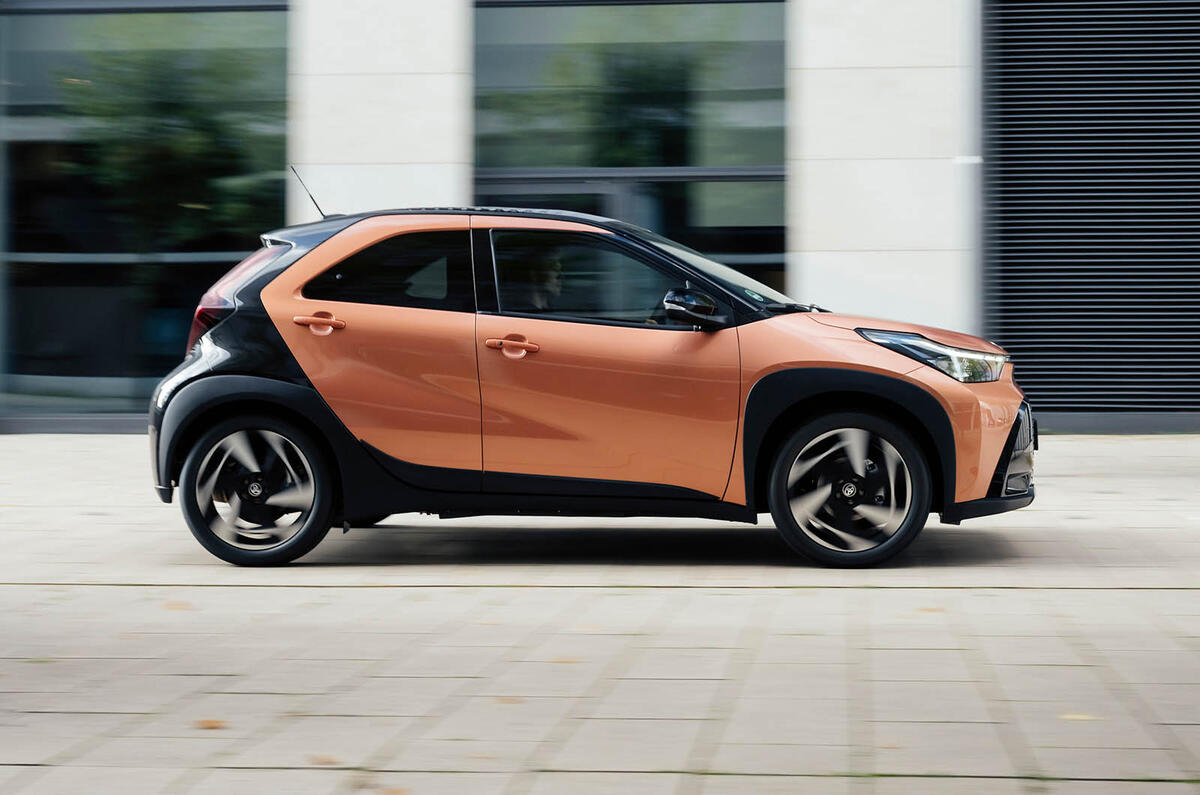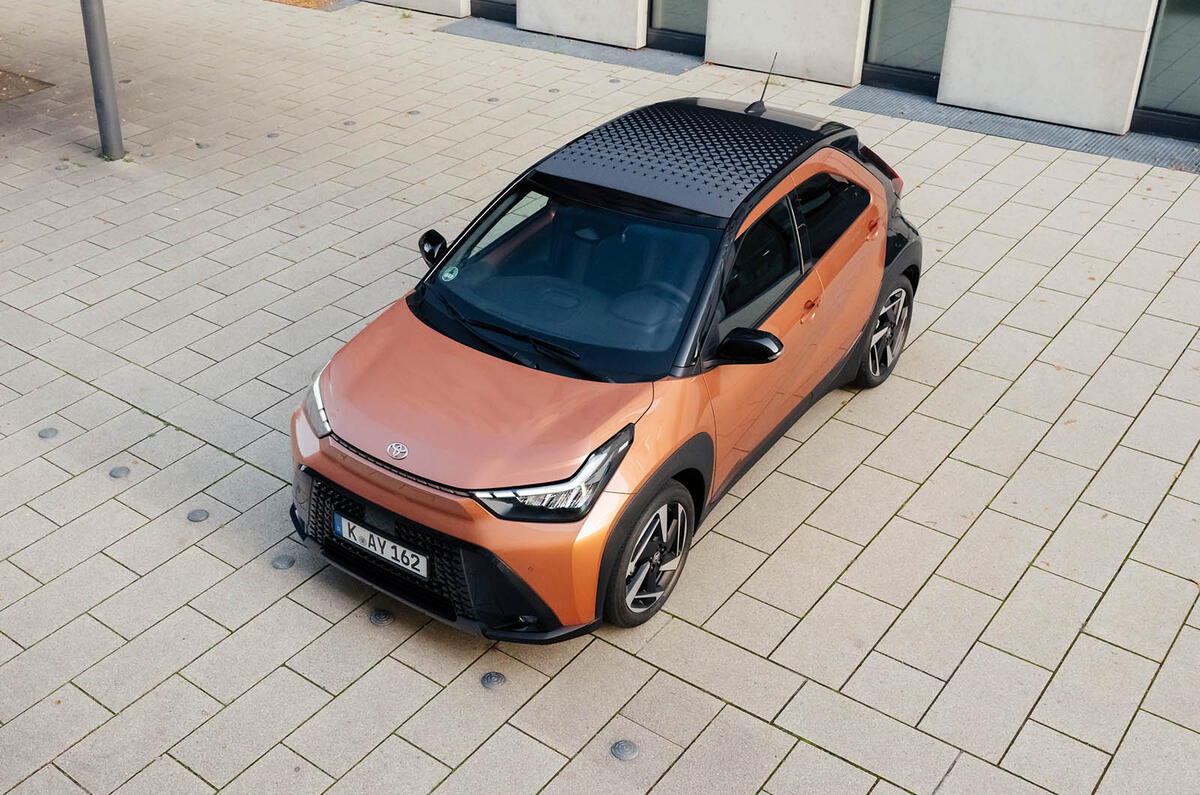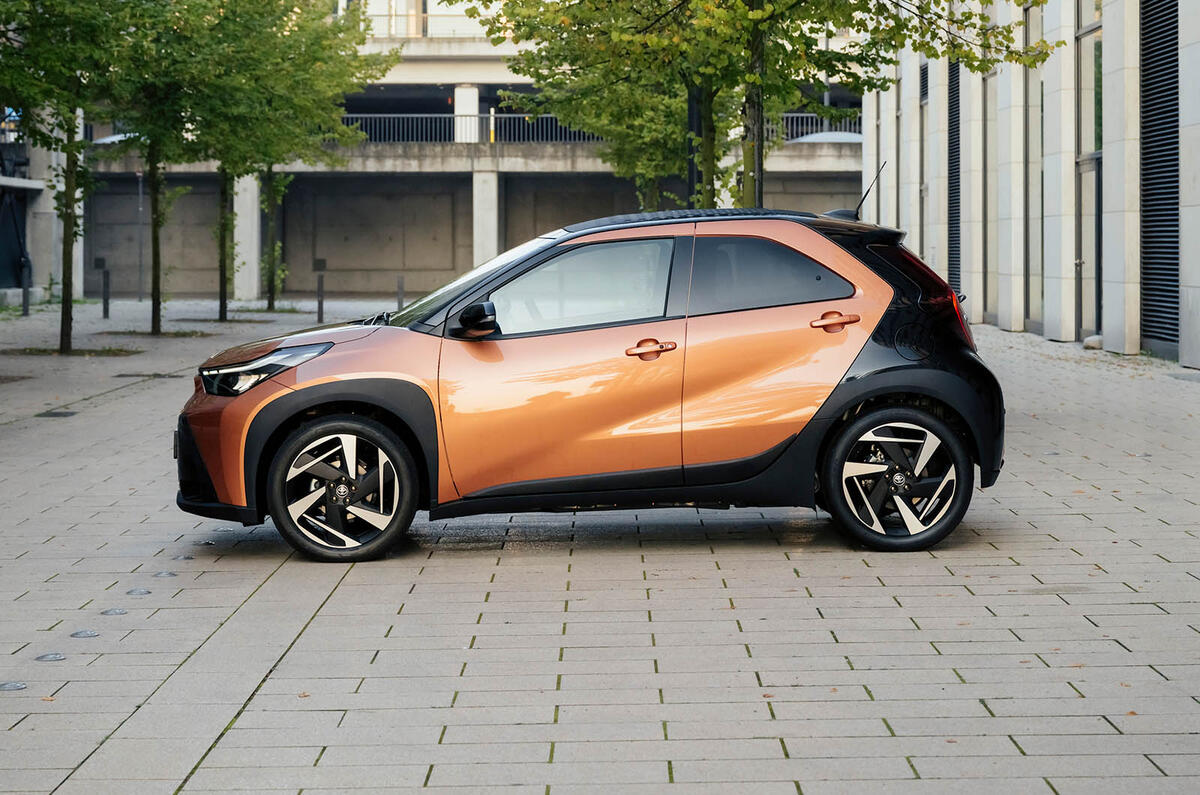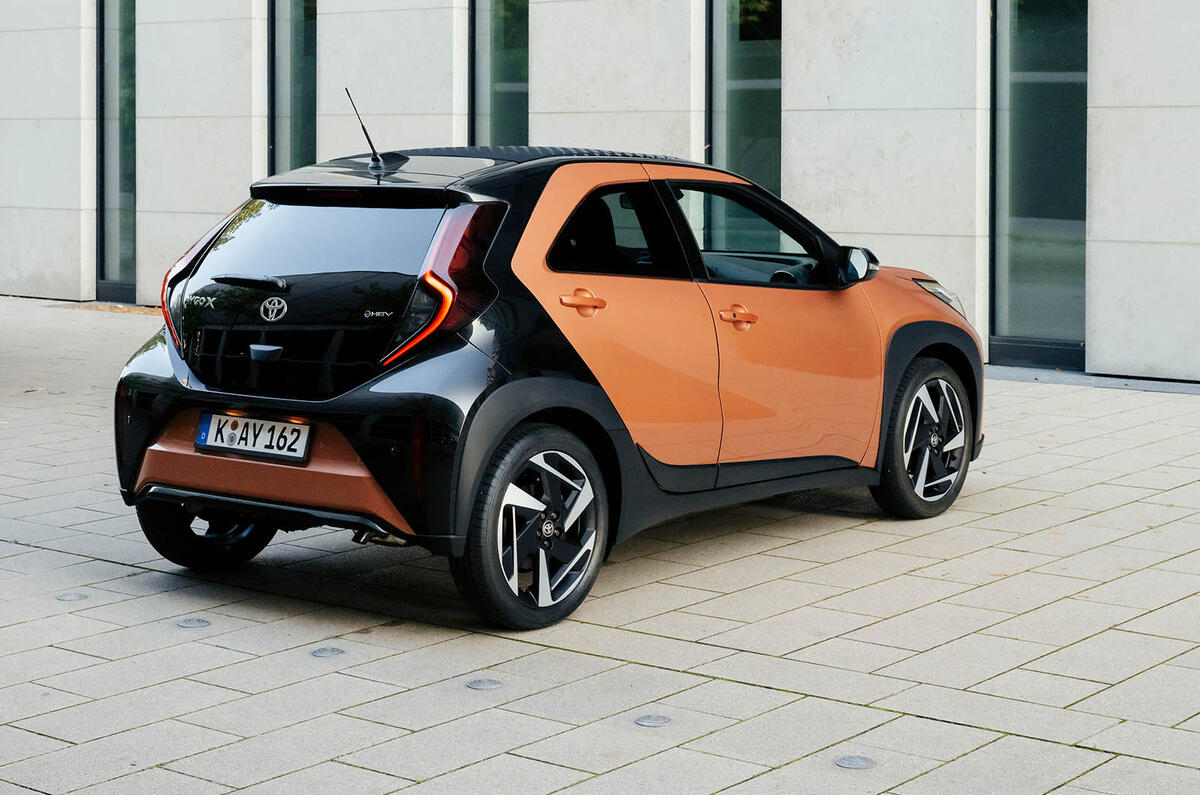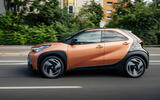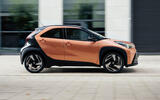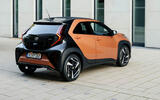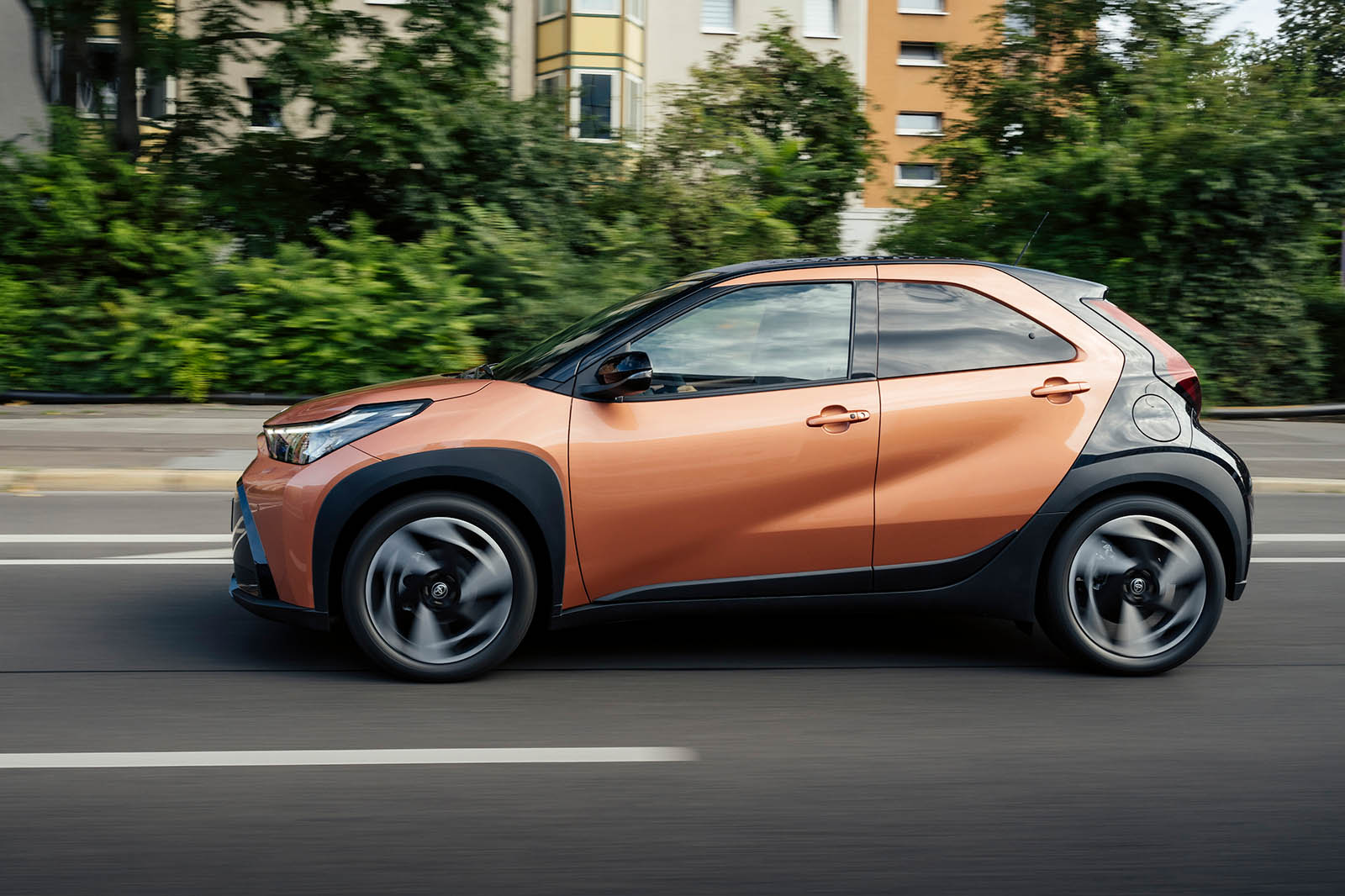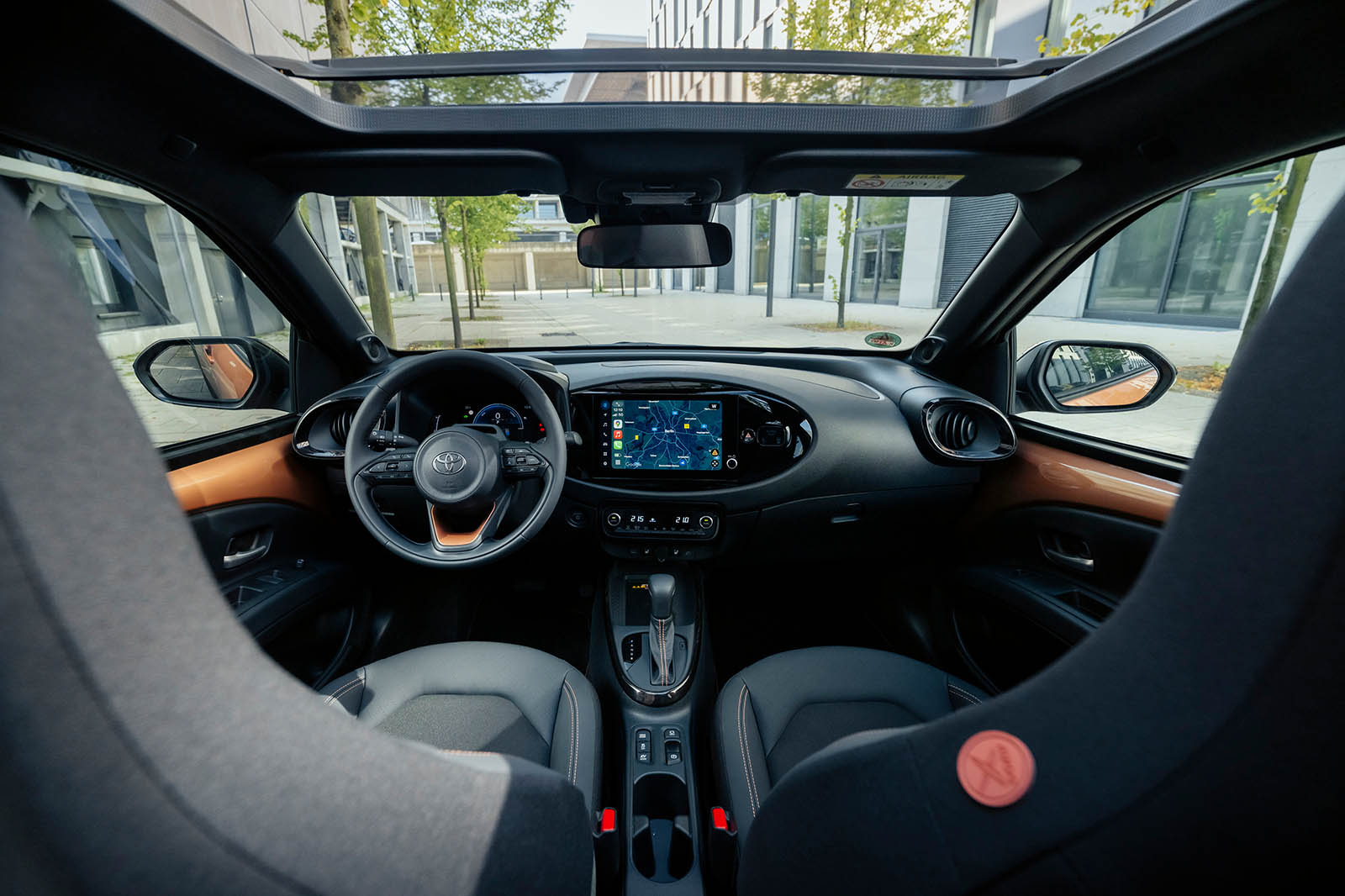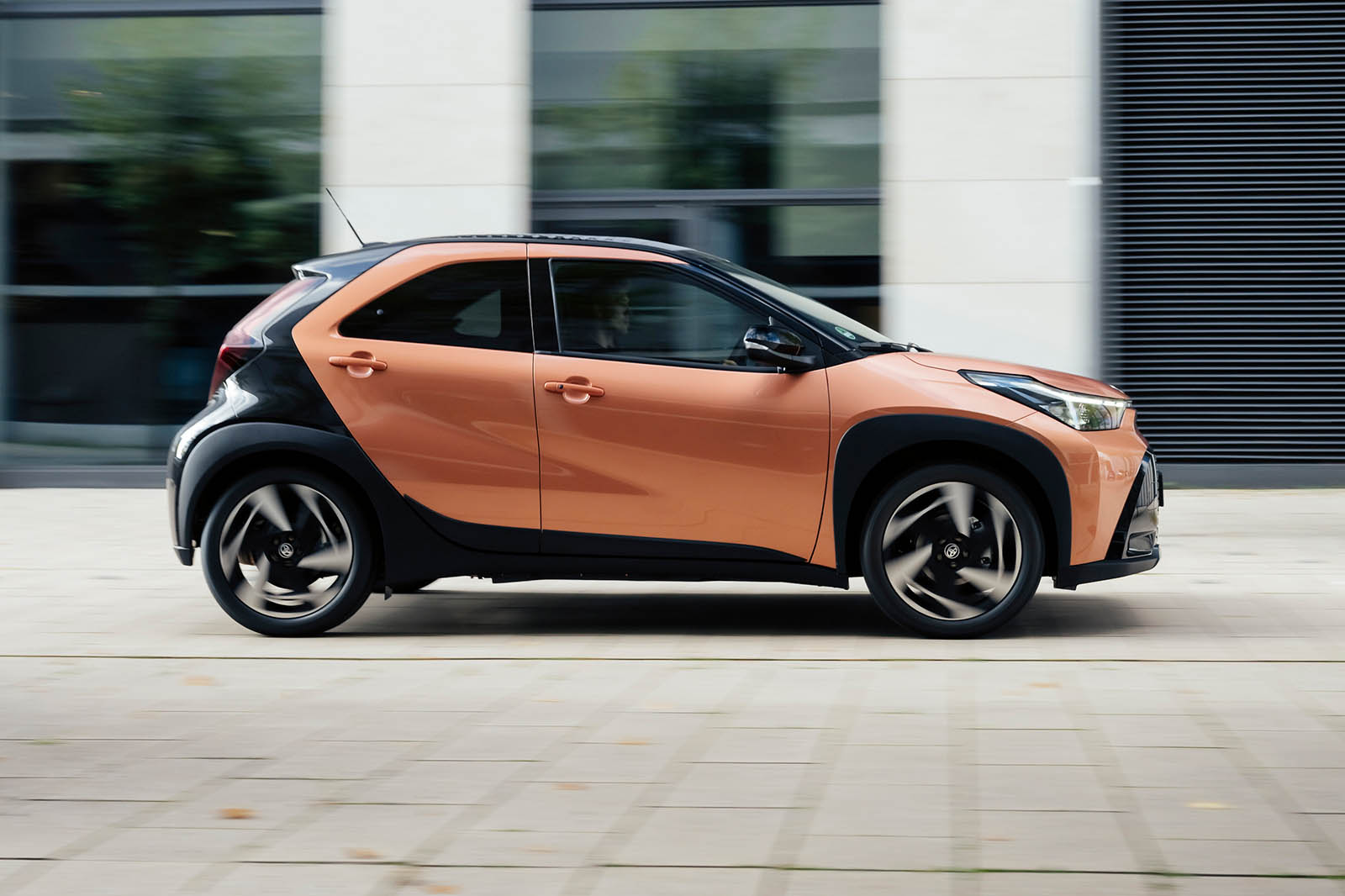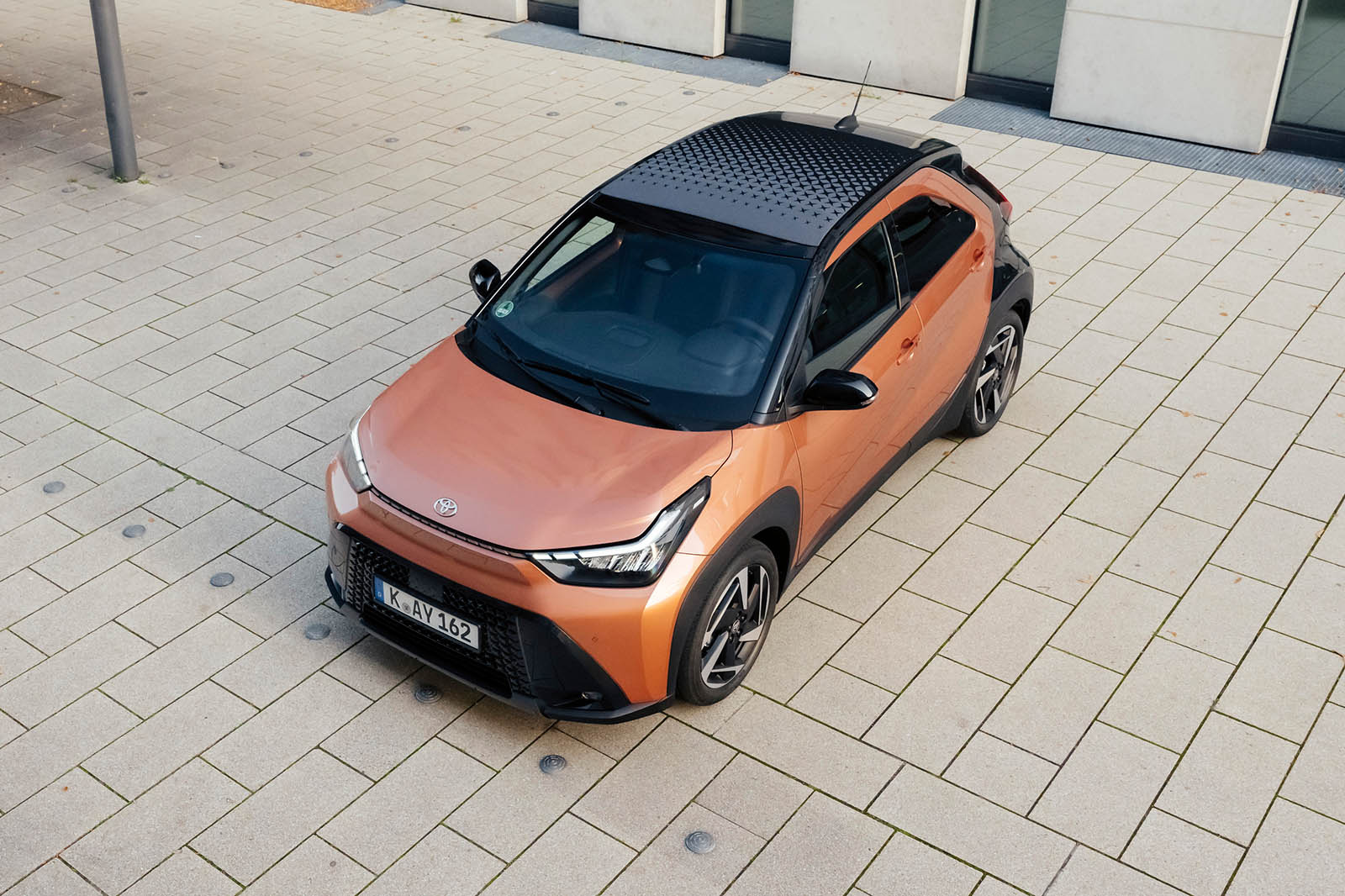Initially, this might appear a minor facelift of the Toyota Aygo X, with a slightly restyled front end, some new colours and trim, and a largely untouched interior. Far from it. Under the skin Toyota has, quite literally, crammed in the changes: it’s basically a new machine miraculously shoehorned into the body of an existing one.
Before explaining what has changed on the city car, let’s explain why: 86mpg. That was the remarkable indicated fuel economy – achieved without any hypermiling efforts – that my Aygo X test car achieved after an extended test loop covering city streets, country roads and autobahn near Berlin, even exceeding the already impressive 76.3mpg official figure. Efficient? There are teetotal camels that sup more liquid than an Aygo X.
That efficiency – and the car’s low 85g/km CO2 emissions – is why Toyota has swapped the Aygo X’s old 1.0-litre three-pot petrol engine for the 1.5-litre hybrid deployed in the Toyota Yaris. And that makes the Aygo X unique: it’s the only ‘full’ hybrid in the city car class, and is intended to make the machine an alternative to the growing rank of small electric cars (not to mention helping Toyota’s fleet emission targets).
Given small petrol cars have felt like an endangered species in recent years – with safety and emissions regulations pushing up costs and eroding profit margins, while consumer demand shifts towards bigger SUVs – it’s an interesting proposition. So can the Aygo X conquer both petrol and electric rivals while helping to save a struggling class?


